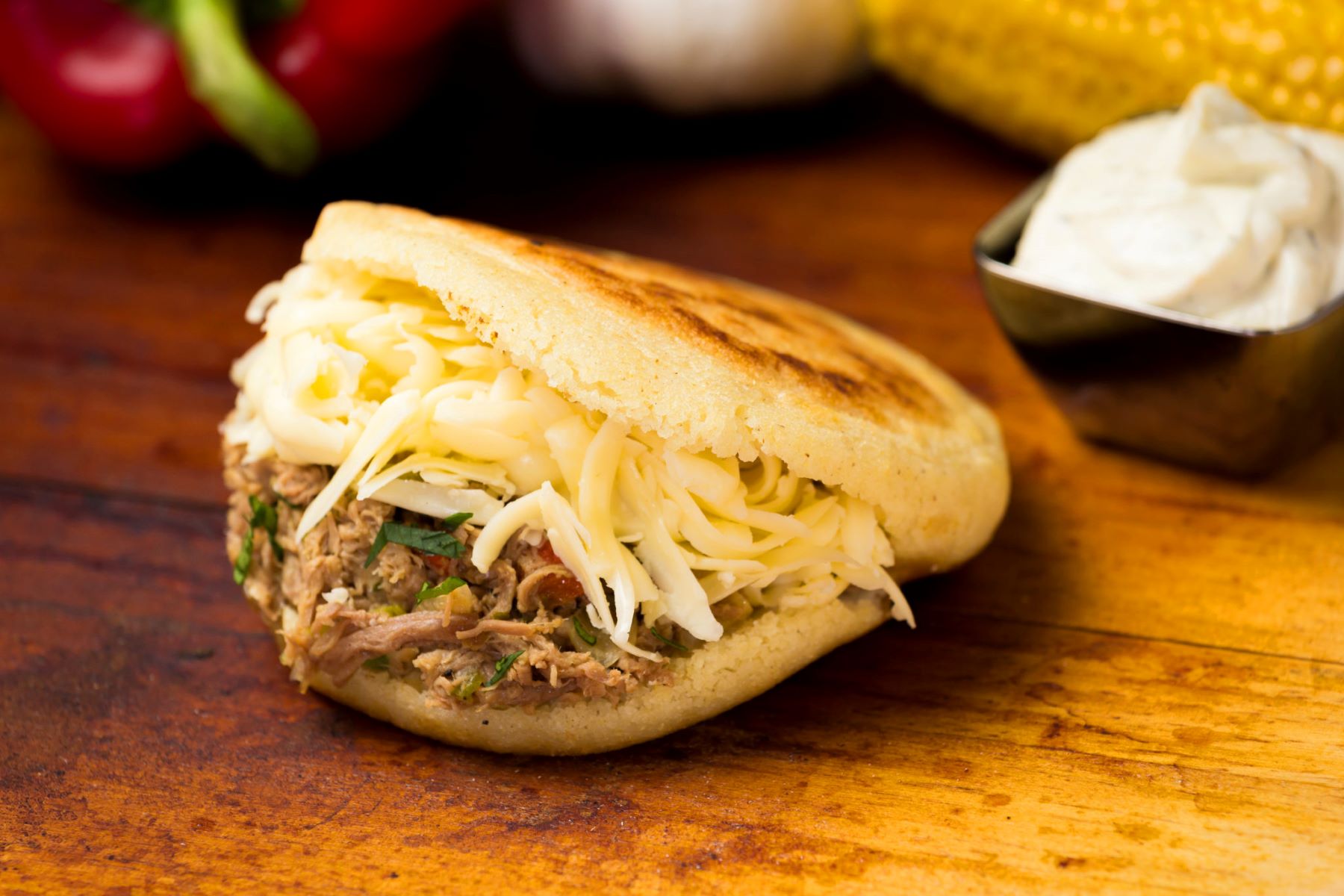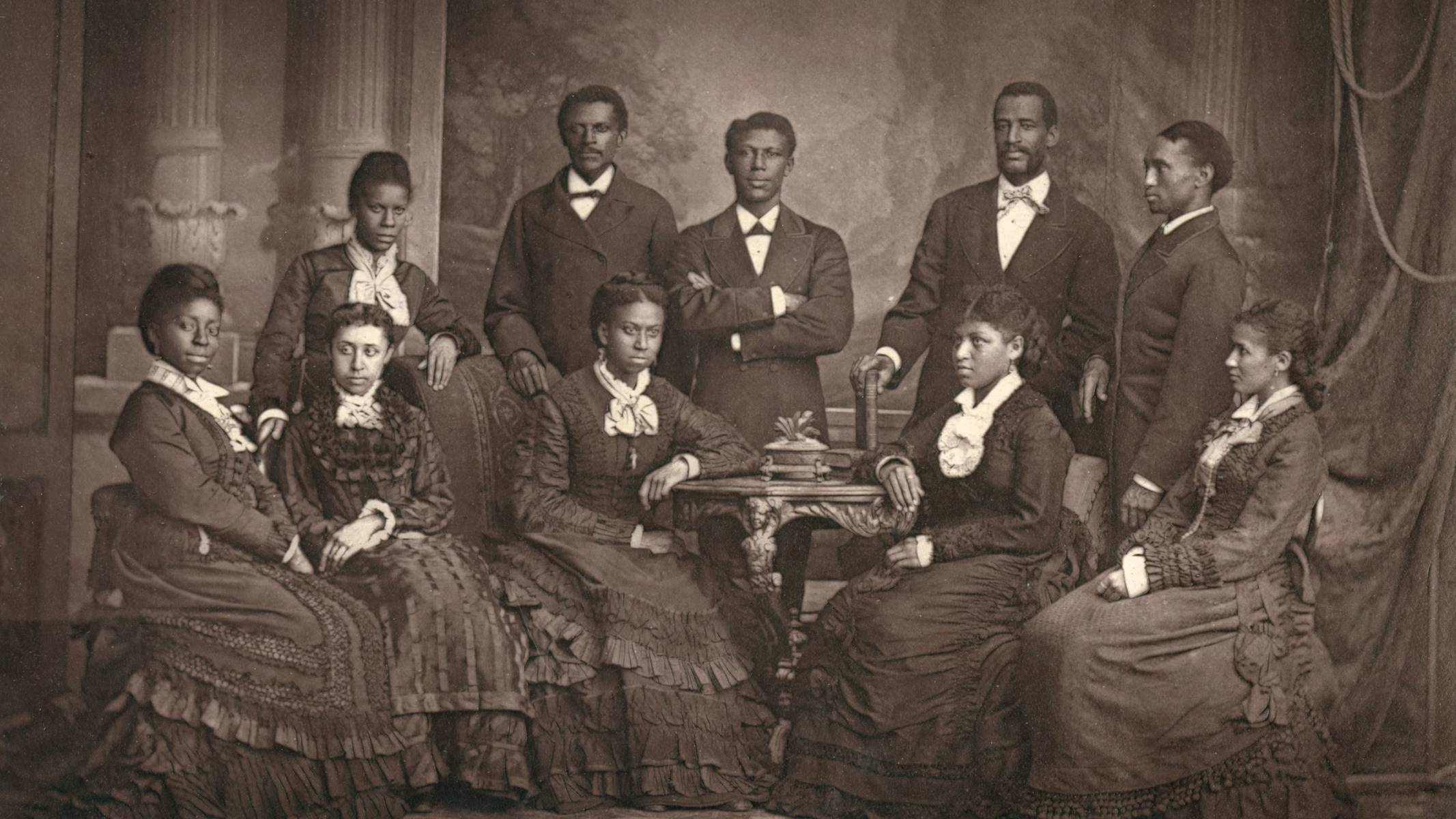Home>Food and Cooking>Pupusas Vs. Arepas: Unveiling The Delicious Battle Of Latin American Delights!


Food and Cooking
Pupusas Vs. Arepas: Unveiling The Delicious Battle Of Latin American Delights!
Published: January 31, 2024
Discover the mouthwatering showdown between Pupusas and Arepas, two iconic Latin American dishes. Explore the rich culinary heritage of these delectable treats with our expert insights on food and cooking.
(Many of the links in this article redirect to a specific reviewed product. Your purchase of these products through affiliate links helps to generate commission for Regretless.com, at no extra cost. Learn more)
Table of Contents
Introduction
Latin American cuisine is a treasure trove of flavors, and two beloved culinary delights that have captured the hearts and palates of food enthusiasts worldwide are pupusas and arepas. These iconic dishes, originating from El Salvador and Colombia/Venezuela respectively, are not only a testament to the rich culinary heritage of their respective regions but also a testament to the cultural significance of food in Latin American societies.
The battle between pupusas and arepas is not just a clash of flavors, but a celebration of the diverse culinary traditions that have been passed down through generations. Each dish represents a unique blend of indigenous, African, and European influences, resulting in a symphony of flavors and textures that tantalize the taste buds.
As we delve into the world of pupusas and arepas, we will uncover the fascinating stories behind their origins, explore the diverse range of ingredients and preparation methods, and discover the regional variations that add depth and complexity to these delectable treats. Additionally, we will uncover the cultural significance of these dishes, their global influence, and the myriad of ways in which they are enjoyed in different parts of the world.
Join us on this culinary journey as we unravel the delicious battle of Latin American delights, celebrating the vibrant tapestry of flavors and traditions that make pupusas and arepas a cherished part of Latin American gastronomy.
The Origins of Pupusas and Arepas
Pupusas, often hailed as the national dish of El Salvador, have a rich and storied history dating back thousands of years. The word "pupusa" is said to have originated from the Pipil, a pre-Columbian indigenous group from El Salvador. The Pipil people are credited with the creation of pupusas, making them a true culinary legacy of the region. These humble yet flavorful corn cakes were a staple food for the indigenous tribes long before the arrival of the Spanish conquistadors.
The process of making pupusas has evolved over time, with the original corn cakes being filled with various indigenous ingredients such as beans, squash, and herbs. With the Spanish colonization, new ingredients like cheese, pork, and refried beans were introduced, transforming pupusas into the beloved dish known today. This fusion of indigenous and Spanish influences has shaped the modern pupusa, reflecting the cultural amalgamation that defines El Salvador's culinary identity.
On the other hand, arepas, originating from Colombia and Venezuela, have a history intertwined with the indigenous tribes of the region, particularly the Timoto-Cuica people. The word "arepa" is believed to have originated from the language of the indigenous groups, signifying the importance of this staple food in their diet. Traditionally, arepas were made from maize flour and water, forming a simple yet versatile flatbread that could be easily prepared and enjoyed.
The arrival of the Spanish conquistadors brought about a significant shift in the preparation of arepas, as wheat flour was introduced to the region. This led to the creation of a new type of arepa, known as "arepa de trigo," which utilized wheat flour instead of maize. Over time, the versatility of arepas became evident, with various regions developing their own unique versions, each with distinct flavors and textures.
The origins of pupusas and arepas are deeply rooted in the traditions and cultural heritage of their respective regions, serving as a testament to the resilience and creativity of Latin American communities. These iconic dishes have transcended time, preserving age-old culinary techniques and indigenous flavors, while also embracing new influences that have enriched their culinary narratives.
Ingredients and Preparation
Pupusas:
Pupusas are traditionally made using masa harina, a type of corn flour that is a staple in Latin American cuisine. The masa harina is mixed with water and a pinch of salt to form a pliable dough. This dough is then shaped into small discs, creating the base for the pupusas. The filling options for pupusas are diverse and can include ingredients such as refried beans, cheese, cooked pork, and loroco, a type of edible flower native to Central America.
The preparation of pupusas involves a meticulous process of forming the dough into a pocket, filling it with the desired ingredients, and then sealing the edges to ensure that the filling remains intact during cooking. The filled pupusas are then flattened to form a thick, round pancake-like shape, ready to be cooked on a hot griddle or comal. The pupusas are cooked until they develop a golden-brown crust, resulting in a delightful contrast between the crispy exterior and the savory, flavorful filling.
Arepas:
Arepas are primarily made using masarepa, a special type of pre-cooked cornmeal that is popular in Colombian and Venezuelan cuisine. The masarepa is mixed with water and salt to form a dough, which is then shaped into thick, round patties. Unlike pupusas, arepas are not typically filled before cooking; instead, the filling is added after the arepas are cooked.
The preparation of arepas involves grilling, baking, or frying the dough patties until they develop a crispy exterior and a soft, fluffy interior. The cooking method can vary based on regional preferences, with some areas favoring a crunchy exterior, while others prefer a softer texture. Once the arepas are cooked, they are sliced open and filled with a variety of ingredients such as cheese, avocado, shredded meats, or beans, allowing for endless customization and flavor combinations.
The ingredients and preparation methods for pupusas and arepas showcase the diversity and ingenuity of Latin American culinary traditions. While both dishes share a common foundation of corn-based dough, the fillings, cooking techniques, and regional variations contribute to the unique identity of each dish, offering a tantalizing glimpse into the rich tapestry of Latin American flavors and culinary heritage.
Regional Variations
Pupusas:
In El Salvador, the heartland of pupusa culture, regional variations of pupusas abound, reflecting the diverse culinary traditions and local ingredients. In the coastal regions, pupusas de mariscos (seafood pupusas) are a popular variation, featuring a delectable filling of shrimp, fish, or a combination of various seafood, infused with coastal flavors and spices. The addition of seafood to the traditional pupusa highlights the influence of the ocean on the local cuisine, creating a unique and savory spin on the classic dish.
In the central regions of El Salvador, pupusas revueltas are a common sight, filled with a tantalizing mixture of refried beans, cheese, and chicharrón (crispy fried pork). This hearty variation pays homage to the robust flavors of the region, offering a satisfying blend of textures and tastes that have become a beloved staple in the local diet.
Furthermore, vegetarian options such as pupusas de loroco, filled with the aromatic and slightly tangy edible flower buds of the loroco vine, cater to the preferences of those seeking a meat-free alternative. This variation exemplifies the creative use of indigenous ingredients, adding a distinctive floral note to the pupusa and showcasing the culinary versatility of El Salvador's traditional cuisine.
Arepas:
The regional variations of arepas in Colombia and Venezuela are a testament to the diverse culinary landscape of these countries. In the Andean regions of Venezuela, arepas reina pepiada take center stage, featuring a sumptuous filling of shredded chicken mixed with avocado and mayonnaise. This iconic variation, with its creamy and flavorful filling, has become a beloved symbol of Venezuelan gastronomy, capturing the essence of the region's culinary heritage.
In the Colombian Caribbean, arepas de huevo have carved a niche in the local cuisine, offering a delightful twist on the traditional arepa. These savory treats are made by frying a small, thick arepa and then cracking an egg into the center, resulting in a crispy exterior and a runny, yolky center. Arepas de huevo are often enjoyed with a side of suero costeño, a tangy Colombian crema, adding a burst of flavor to this coastal delight.
Furthermore, the Llanos region of Colombia is known for its arepas de chócolo, a variation made with fresh corn kernels, giving the arepas a slightly sweet and earthy flavor. The use of fresh corn in this variation showcases the agricultural abundance of the region and adds a unique dimension to the culinary heritage of Colombia.
The regional variations of pupusas and arepas offer a glimpse into the culinary diversity and cultural richness of Latin America, highlighting the ingenuity and creativity of local communities in crafting unique and flavorful adaptations of these beloved dishes.
Serving and Accompaniments
The serving and accompaniments of pupusas and arepas play a crucial role in elevating the dining experience, offering a myriad of flavor combinations and textures that complement the main dishes. The presentation and accompaniments are essential elements that enhance the overall enjoyment of these Latin American delights.
Pupusas:
In El Salvador, pupusas are traditionally served with curtido, a tangy and crunchy cabbage slaw that provides a refreshing contrast to the rich and savory flavors of the pupusas. The curtido is made by fermenting a combination of shredded cabbage, carrots, and onions in a brine seasoned with oregano, giving it a distinctive zing that cuts through the richness of the pupusas. Additionally, a side of salsa roja, a vibrant and spicy tomato sauce, is often served alongside pupusas, adding a kick of heat and acidity to each bite.
Arepas:
In Colombia and Venezuela, arepas are often enjoyed with a wide array of fillings and accompaniments, allowing for endless customization and flavor combinations. Common fillings include shredded meats, cheese, avocado, and beans, each adding a unique dimension to the arepa. Furthermore, creamy and indulgent sauces such as guasacaca, a Venezuelan avocado-based sauce, and hogao, a Colombian tomato and onion sauce, are popular accompaniments that enhance the flavor profile of the arepas, creating a harmonious blend of textures and tastes.
The accompaniments for pupusas and arepas not only add depth and complexity to the dishes but also reflect the vibrant culinary traditions and regional influences that have shaped the dining customs of Latin America. Whether it's the tangy crunch of curtido paired with pupusas or the creamy richness of guasacaca drizzled over arepas, the serving and accompaniments play a pivotal role in enhancing the sensory experience, inviting diners to savor the diverse and harmonious flavors of Latin American cuisine.
Popularity and Global Influence
The allure of pupusas and arepas extends far beyond their countries of origin, captivating the palates of food enthusiasts worldwide and earning a well-deserved reputation for their delectable flavors and cultural significance. These iconic Latin American dishes have transcended borders, gaining widespread popularity and influencing culinary landscapes across the globe.
In recent years, both pupusas and arepas have enjoyed a surge in global recognition, thanks to the growing appreciation for diverse and authentic cuisines. Their appeal lies in their versatility, as they cater to a wide range of dietary preferences, including vegetarian, gluten-free, and dairy-free options. This adaptability has contributed to their widespread acclaim, making them accessible and appealing to a diverse audience.
The global influence of pupusas and arepas can be witnessed in the proliferation of Latin American restaurants and food trucks in numerous countries, where these beloved dishes take center stage on menus, offering a taste of traditional flavors and culinary heritage. Additionally, the rising demand for Latin American ingredients and cooking techniques has further propelled the popularity of pupusas and arepas, as chefs and home cooks alike seek to recreate the authentic flavors of these iconic dishes.
Social media platforms and food blogs have also played a pivotal role in amplifying the global reach of pupusas and arepas, with captivating visuals and enticing descriptions piquing the curiosity of food enthusiasts around the world. As a result, these dishes have garnered a dedicated following, with food aficionados eager to explore the nuances of pupusas and arepas, from their historical roots to the diverse range of fillings and accompaniments.
Furthermore, the recognition of pupusas and arepas as cultural ambassadors of Latin American cuisine has led to their inclusion in international food festivals, culinary events, and educational programs, where they serve as ambassadors of Latin American culinary traditions, fostering cross-cultural exchange and appreciation.
In essence, the popularity and global influence of pupusas and arepas exemplify the universal appeal of authentic, time-honored dishes that celebrate the rich tapestry of Latin American flavors and traditions. As they continue to make waves on the global culinary stage, pupusas and arepas stand as enduring symbols of the vibrant and diverse culinary heritage of Latin America, inviting individuals from all walks of life to savor the magic of these beloved Latin American delights.
Conclusion
In conclusion, the delicious battle of Latin American delights has unveiled the captivating stories and flavors of pupusas and arepas, showcasing the rich culinary heritage and cultural significance of these iconic dishes. From the indigenous roots of pupusas in El Salvador to the versatile adaptations of arepas in Colombia and Venezuela, these beloved treats embody the spirit of Latin American gastronomy, celebrating the fusion of traditions, ingredients, and flavors that have shaped their timeless appeal.
The origins of pupusas and arepas, deeply intertwined with the histories of their respective regions, reflect the resilience and creativity of Latin American communities, preserving age-old culinary techniques and indigenous flavors while embracing new influences that have enriched their culinary narratives. The evolution of these dishes serves as a testament to the enduring legacy of Latin American culinary traditions, offering a glimpse into the cultural tapestry that defines the vibrant culinary landscape of the region.
Furthermore, the regional variations of pupusas and arepas highlight the diverse culinary customs and local ingredients that contribute to the unique identity of each dish. Whether it's the seafood-infused pupusas de mariscos from El Salvador or the creamy arepas reina pepiada from Venezuela, these regional adaptations showcase the ingenuity and creativity of Latin American communities in crafting unique and flavorful versions of these beloved dishes.
The serving and accompaniments of pupusas and arepas play a pivotal role in enhancing the dining experience, offering a symphony of flavors and textures that complement the main dishes. From the tangy crunch of curtido paired with pupusas to the creamy richness of guasacaca drizzled over arepas, these accompaniments reflect the vibrant culinary traditions and regional influences that have shaped the dining customs of Latin America.
Moreover, the global influence and popularity of pupusas and arepas underscore their universal appeal and their role as cultural ambassadors of Latin American cuisine. As they continue to capture the hearts and palates of food enthusiasts worldwide, these iconic dishes stand as enduring symbols of the vibrant and diverse culinary heritage of Latin America, inviting individuals from all walks of life to savor the magic of these beloved Latin American delights.













